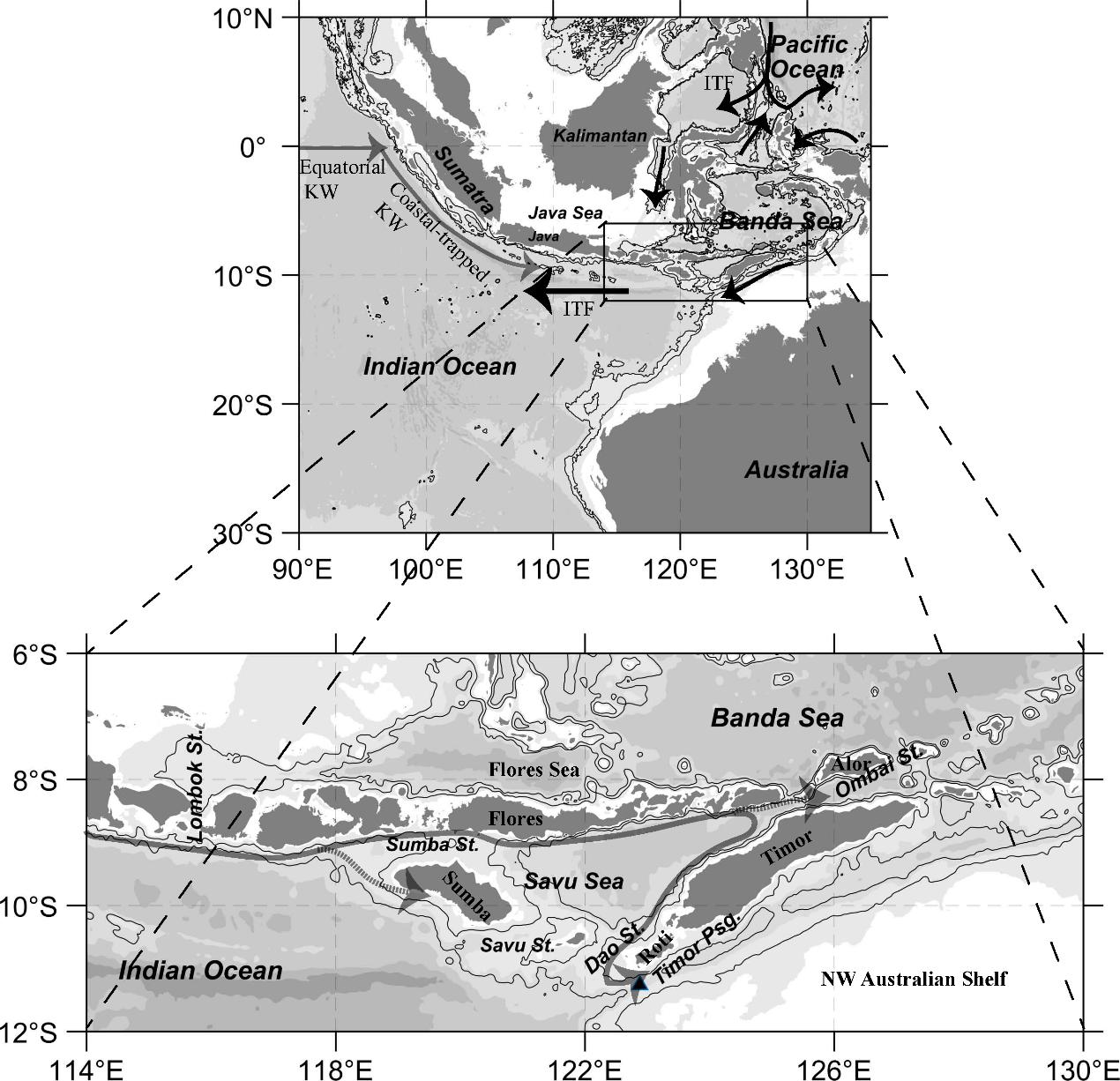The transport through the Timor Passage, which is a major strait east of Timor-Leste connecting the Indian Ocean with the Indonesian seas, contributes a large portion of the transport to the Indonesian Throughflow (ITF). Historically, the interannual variations of the Timor Passage currents during major interannual climate anomaly event, like El Nino Southern Oscillation (ENSO) and Indian Ocean Dipole, have not been observed.
Recently, scientists from China collaborated with scientists from Research Center for Oceanography-National Research and Innovation Agency (RCO-BRIN), Indonesia, have disclosed the transports of the Timor Passage during a strong Indian Ocean Dipole event.
The study was published in Journal of Geophysical Research: Oceans on Nov. 11.
The study is based on the current meter data collected by a deep ocean mooring in the Timor Passage from September 2017 to December 2019, covering the strongest positive Indian Ocean Dipole event on record in 2019. The mooring is part of the Western Pacific Ocean Circulation-ITF (WPOC-ITF) mooring array, constructed by the Institute of Oceanology of the Chinese Academy of Sciences (IOCAS) with the help of RCO-BRIN, to measure the ocean circulation and climate changes in the western Pacific and eastern Indian Oceans. The data serve as an important complement to the international Nusantanggara Transport (INSTANT) program observation in 2003-2006.
The observations suggest that Indian Ocean dynamics win out over the Pacific Ocean dynamics in gating the transport through the Timor Passages during the 2019 Indian Ocean Dipole event. The mean volume transport through the Timor Passage into the Indian Ocean is newly estimated to be -9.9 ±1.0 Sv (1 Sv=106 m3 s-1) in the upper 1400 m, with much of this transport concentrated in the upper 480 m (-8.9 Sv). This value is in contrast to the -7.5 Sv above 1890 m estimated based on INSTANT mooring measurements. The transport during the 2019 positive Indian Ocean Dipole event was only slightly larger than that during the 2018 normal year in the upper 480 m.
Seasonally, dominant annual cycle in the upper 150 m driven by local monsoonal winds and semiannual cycle in the lower layer driven by remote Kelvin waves from the Indian Ocean were observed. The baroclinic processes, due to the strong stratification of the ocean, play an important role in producing the semiannual-dominant variability of the ITF through the Timor Passage. "The annual cycle transports in the upper and lower layers largely cancel each other. The disclosed results are important for understanding the dynamics of the ITF connecting the Indian Ocean and the Indonesian seas," said Prof. YUAN Dongliang, the corresponding author.
This work is financially supported by the Natural Science Foundation of China, the MNR, the CAS, the Laoshan Laboratory, NSFC, and the National Key R&D Program of China. Scientists from IOCAS, Southern Marine Science and Engineering Guangdong Laboratory (Zhuhai), and First Institute of Oceanography, Ministry of Natural Resources have participated in the collaborated study.

Bathymetry in the Indonesian seas and the mooring (triangle) position deployed in the Timor Passage. Equatorial and coastal-trapped Kelvin waves in the eastern Indian Ocean are marked, and schematics of the ITF in the Western Pacific Ocean and Indonesian seas are also shown with arrows.
Wang, J., Zhengbei Zhang, Xiang Li, Zheng Wang, Yao Li, Jiajia Hao, Xia Zhao, Corry Corvianawatie, Dewi Surinati, Dongliang Yuan*, Tengfei Xu. (2022). Moored Observations of the Timor Passage Currents in the Indonesian Seas. Journal of Geophysical Research: Oceans, 127, e2022JC018694.
(Text by YUAN Dongliang)
Media Contact:
ZHANG Yiyi
Institute of Oceanology
E-mail: zhangyiyi@qdio.ac.cn
(Editor: ZHANG Yiyi)

